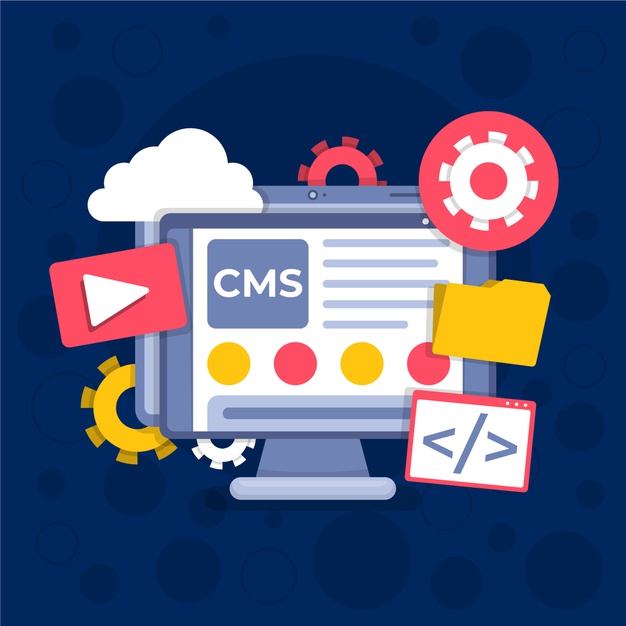
A CMS or Content Management System means exactly as it sounds.
It’s a simple to use software that helps create and modify digital content and is used most frequently in constructing and maintaining websites. It also makes working in tandem easier for your web development and marketing teams.
But wait – you already knew that, didn’t you?
So let’s talk about CMS security instead.
Approximately 16 billion records were exposed in the 1000+ website security breaches that took place in 2020.
So while one may argue as to why anyone would want to hack blogs or content-based web pages, what they fail to realize is that it is not just this content that is accessible to the intruder. The confidential customer data, information about finances and financial transactions, etc. are also exposed in such breaches.
There are a number of pathways that pose a threat to your website and protection against those is of as much importance as the site’s structure itself.
Why Does Your Website Need a Secure CMS?
To answer this question, let’s look at some of the major risk sources to your valuable business website and database.
Web-borne Threats
Developers often use front-end client-side coding instead of the more secure server-side code required. This makes the site susceptible to endpoint security breaches through injection code, cross-site scripting, and several other ways.
The crux of this concern lies in the usage of extensions by client-side developers for a regular traffic stream, which allows backend APIs to regularly update the backend server of the content management system. Cybercriminals can easily take advantage of this mechanism by begetting said APIs to send malicious requests.
Making use of the server-side code in contrast is much safer.
Browser-based Vulnerability
The various internet browsers can be individually held responsible for the defenselessness of the CMS. Traditional search engines execute arbitrary codes locally. This creates an additional risky situation due to pop-up advertisements, plugins, insecure layovers, and add-ons.
It’s advised that to mitigate these security threats, isolating modules, and further add-ons should be undertaken.
Hacking through Login Screens
Getting through the various layers of a firewall may be a personal favorite of several hackers. However, simply coming in through the login page is also a well-enjoyed activity.
All it takes is inputting the right password which can be easily achieved through various permutations and combinations (aka a brute force attack) and voila! They are in your admin panels, going through all the important features and functionalities wherein they can make the minor-est changes in a way that leads you to losses or them to gains, or both.
You can prevent this by limiting the number of login attempts or using two-factor authentication for the login process.
Unsafe Plugins
Websites often need plugins, add-ons, and extensions to smoothen out the design and working of the same. Nevertheless, if you extensively use unverified programs or tools from unreliable sources, it opens up pathways for hackers and makes your website more vulnerable.
Thus, it is advisable to only use plugins that are trustworthy, which are also usually inherently available on various CMS Platforms you use to build the pages. WordPress is one such platform that has a huge library of protected plugins you can use to make your site better and better, in terms of appearance, functionality, and everything in between.
Outdated Websites
While we understand making a website from scratch is not possible in regular intervals, an alternative is simply updating the CMS platform that you have used in making the same. Sites built on obsolete management systems often have archaic and outdated security measures in place, which are easily penetrable by a hacker.
Some Simple Solutions
Although there are a string of fixes available you can execute to secure your website and customer data, the following are some of the simplest yet most effective solutions you can implement right away.
Two-factor Authentication
This is a common method used by multiple tech giants, including Google for its user login page. This requires the visitor to put in not just the password but also answer an additional code or input an OTP received on the registered phone number and/or email address.
Restricting the Number of Login Attempts
As we established above, a weak password can easily be broken with a brute force attack. To avoid this, you can impose a restriction on the number of times one is allowed to put in a wrong password. If the user exceeds that limit, they are automatically locked out of the account for a certain duration of time.
Using Firewalls
A firewall is an additional layer of security that a developer implements on a page to make it more secure. This can also block unwanted IP addresses and track any and all suspicious activity being conducted on the site.
Keeping the Website Updated
The CMS platform being used and its plugins should be updated at regular intervals. This helps keep the website up to date with the latest security measures and eliminates the worry of losing data due to such negligence.
Final Thoughts
Websites are a carefully laid-out construction of codes. A CMS makes it easier for novice developers or complete newbies to also create beautiful and functional sites.
Migrating to a tried-and-true and secure CMS like WordPress — used by top websites on the planet (like TechCrunch, Etsy, Yelp, etc.) and is constantly patched by hundreds of developers — can be a great strategy to further secure your enterprise website.
Nevertheless, building a website could backfire if it isn’t secure. It’s about time we realize that a website’s security is just as important as its design. Follow the simple security measures outlined above to make your website much more secure straight away.








